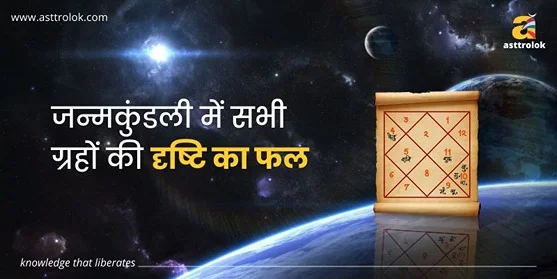
Feng Shui and Vaastu, often referred to as Vastu Shastra, are ancient practices rooted in the belief that the arrangement of your environment can significantly impact your life and well-being. While both aim to create harmony and balance, they originate from different cultural backgrounds and have unique principles and approaches. In this blog, we will explore the key differences between Feng Shui and Vaastu, shedding light on their origins, principles, and practical applications.
learn more about Vastu. Get an online astrology consultation by the world-renowned astrologer Mr. Alok Khandelwal.
Origins
Feng Shui: Feng Shui, which means "wind and water" in Chinese, originated in ancient China over 3,000 years ago. It is deeply rooted in Chinese philosophy, including the principles of Taoism and Confucianism. Feng Shui practitioners believe that the arrangement of objects and spaces can influence the flow of energy, or "chi," and impact one's health, wealth, and happiness.
Vaastu (Vastu Shastra): Vaastu, also known as Vastu Shastra, has its roots in ancient Indian architecture and construction practices. The term "Vaastu" is derived from the Sanskrit word "Vastu," which means "dwelling" or "building." Vaastu Shastra is a part of the Indian Vedas and is deeply connected to Hindu spirituality and philosophy. It aims to create a harmonious and balanced living environment.
Principles
Feng Shui:
1. Five Elements: Feng Shui is based on the concept of five elements—wood, fire, earth, metal, and water. These elements are interconnected and must be balanced to achieve harmony in one's surroundings.
2. Bagua Map: Feng Shui uses the Bagua map, which divides space into nine areas, each associated with specific life aspects such as career, wealth, love, and health. Practitioners use this map to determine the optimal placement of objects and furniture.
3. Yin and Yang: The principles of Yin and Yang, representing opposing but complementary forces, are essential in Feng Shui. Balancing these forces is crucial for creating harmony and positive energy flow.
Vaastu (Vastu Shastra):
1. Directional Orientation: Vaastu places significant importance on the directional orientation of a building or space. Every direction has a connection to certain deities and elements. For instance, the northeast is associated with water and is considered ideal for a prayer room.
2. Five Elements: Like Feng Shui, Vaastu also incorporates the five elements—earth, water, fire, air, and space. These elements must be balanced well for a harmonious environment.
3. Vastu Purusha Mandala: Vaastu uses the Vastu Purusha Mandala, a grid that represents the cosmic man. The placement of rooms and structures is determined based on this grid to ensure the flow of positive energy.
Applications
Feng Shui:
1. Home and Office Design: Feng Shui consultants often work with individuals to optimize the layout and design of homes and offices. They may suggest rearranging furniture, using specific colors, or adding certain elements to enhance positive energy flow.
2. Interior Decor: Feng Shui principles are also applied to interior decor choices, such as artwork, lighting, and decorative objects. These elements are chosen to align with the Bagua map and balance the five elements.
3. Landscaping: Feng Shui extends to landscaping, where the placement of trees, plants, and water features is carefully considered to create a harmonious outdoor environment.
Read Also:- How Scorpio's Five Strengths Lead to Success
Vaastu (Vastu Shastra):
1. Architectural Design: Vaastu principles are integrated into the architectural design of buildings and homes. The direction, layout, and placement of rooms and structures are determined based on Vaastu guidelines.
2. Construction Practices: During construction, Vaastu experts may supervise and guide builders to ensure that the building adheres to Vaastu principles. This includes factors like the placement of the main entrance and the direction of rooms.
3. Religious and Spiritual Practices: Vaastu Shastra is closely linked to Hindu religious and spiritual practices. Many individuals incorporate Vaastu principles into the construction of temples, meditation rooms, and prayer spaces.
Flexibility and Cultural Context
Feng Shui: While Feng Shui has its roots in Chinese culture, it has gained international popularity and is practiced worldwide. Feng Shui principles can be adapted to various cultural and architectural contexts.
Vaastu (Vastu Shastra): Vaastu Shastra is deeply embedded in Indian culture and spirituality. While its principles are followed by many in India, it may be less common in other parts of the world. Adhering strictly to Vaastu guidelines may pose challenges in non-Indian contexts.
Conclusion: Balancing Energy and Harmony
A deeply personal one. It's about finding the right balance between cultural connection, specific goals, and your individual preferences.
Whichever path you choose, remember that both Feng Shui and Vaastu have stood the test of time, guiding countless individuals seeking to improve their lives through the harmonization of their living environments. The principles and practices offered by these ancient systems can serve as valuable companions on your journey to a more balanced and energetically aligned space.
In the end, what truly matters is the intention and effort you invest in creating a harmonious home or workspace. Whether it's the gentle flow of Qi in Feng Shui or the cosmic alignment in Vaastu, the ultimate goal is to nurture an environment where positive energy thrives, and you can lead a life filled with balance, positivity, and well-being. So, choose the path that resonates with you, and embark on your journey to create a space where harmony and balance reign supreme.
Read Also:- Items at the doorway to attract Ma Lakshmi
Comments (0)
Categories
Recent posts


जन्मकुंडली में ...
30 Aug 2023
Importance of Bhakoot Koota in Kundali ...
30 Aug 2023

.webp)














